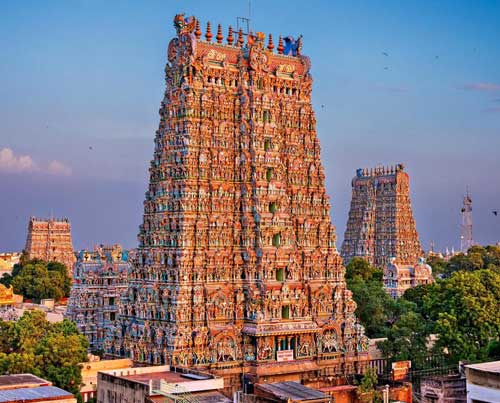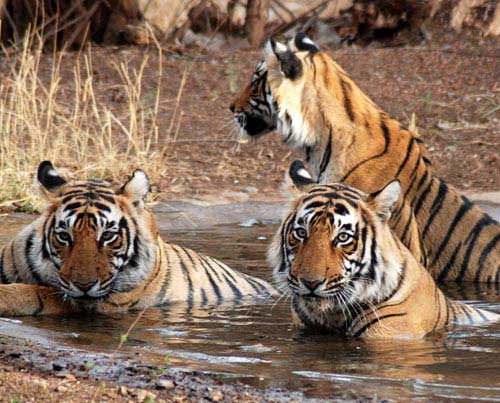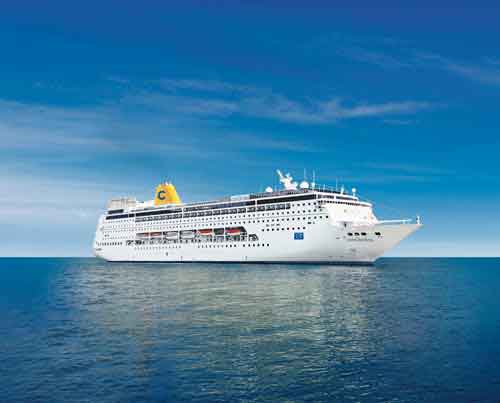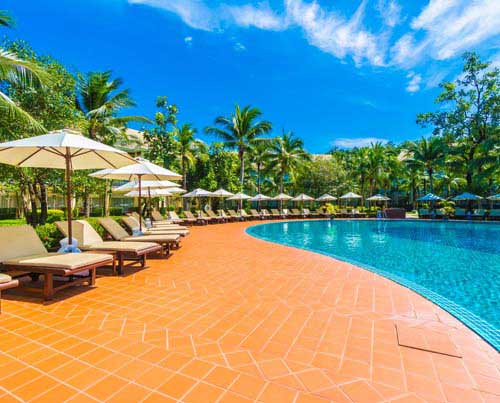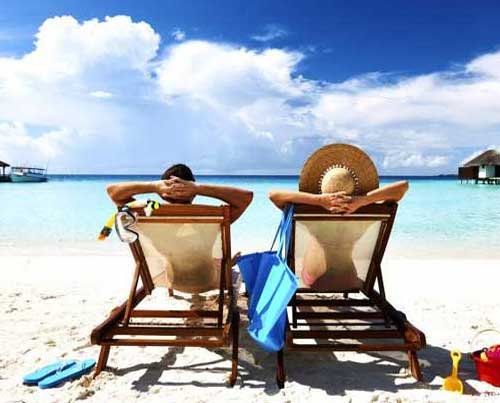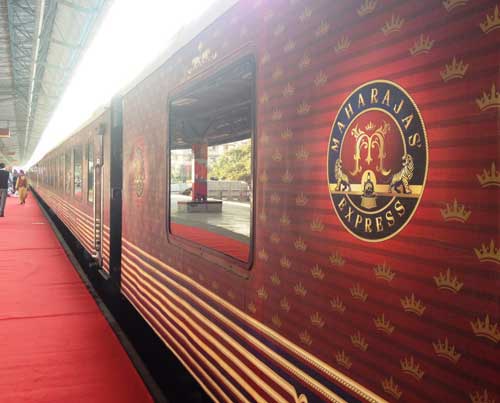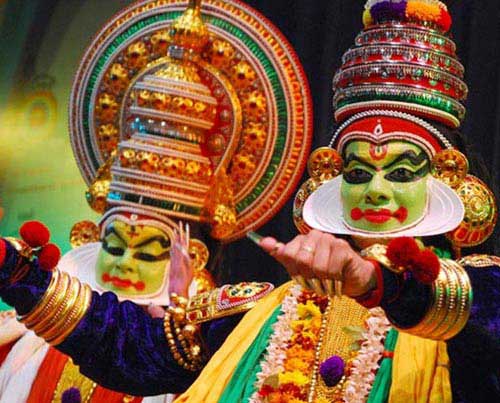Weekend Getaways
- +91 971 730 0203
- info@incredibleindia-tourism.org
-

Indian Maharaja Express
Redefining Luxury & Royalty
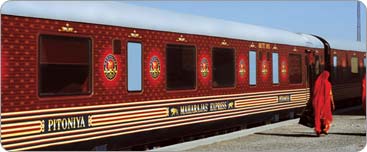
Travelling to any corner of India is more rewarding when you can also experience its authentic local custom and rich culture. Excitement and fun of journey is magnified when you get to meet elements like surprises, inspiration, challenge and entertainment.
The local culture as well as environment always have a direct influence on the visitor's experience of being in the place. The fairy-tale journey across a multifarious wonderland of India through the Indian Maharaja is one of its kind experience.
The Indian Maharaja Express is fanciful and delightful and is known for its par excellent abundance. Elegance and splendour of this train whisper the richness of Raj culture. Its aristocratic services and royal domain ranked it among the best luxury trains.
The Indian Maharaja Express is a synonym for plethora of luxury which ensures eight days and seven nights' memorable expedition. The week long tour of this luxury train Indian Maharaja encompasses several enchanting destinations covering the richness of North India and Maharashtra. This train passes through some most wonderful destinations like Delhi, Jaipur, Agra, Udaipur, Sawai Madhopur, Aurangabad, Ahmedabad and Mumbai.
History
The Indian Maharaja Express was a joint venture of the Government of India, Ministry of Railway and MTDC (Maharashtra Tourist Development Corporation). It was especially developed on the line and concept of finest luxury trains in the world such as the Orient Express of Europe, the Eastern and Oriental of South East Asia and the Blue Train of South Africa.
Note: Currently this train is not in operation and the route (Mumbai - Delhi) of Indian Maharaja Express is being covered by another luxury train Deccan Odyssey.
Note: Currently this train is not in operation and the route (Mumbai - Delhi) of Indian Maharaja Express is being covered by another luxury train Deccan Odyssey.
Indian Maharaja Express - Deccan Odyssey offers 7 Nights/ 8 Days tour. The train starts from Delhi to Mumbai and Mumbai to Delhi on every Wednesday of the week.
Optional return flight from Mumbai to Delhi is also available.
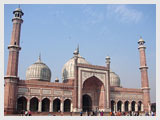
Day 1 - Wednesday: Departure Delhi
In the morning, welcome meeting at hotel. Later, proceed for sightseeing of Delhi with lunch at city hotel.
Delhi: India’s capital and a major gateway to the country, contemporary Delhi is a bustling metropolis, which successfully combines in its folds - the ancient with the modern. Amidst the fast spiraling skyscrapers the remnants of a bygone time in the form of its many monuments stand as silent reminders to the region’s ancient legacy. The first impressions for any visitor traveling in from the airport are of a specious, garden city, tree-lined with a number of beautiful parks.
You will first visit Old Delhi. The tour will begin with a visit to Raj Ghat, a simple memorial to Mahatma Gandhi; drive past the Red Fort - a world heritage site, continuing to the Jama Masjid, It is the largest mosque in India, accommodating up to 25,000 worshippers at one time.
The tour to Imperial Delhi will include a visit to the Qutub Minar, the tallest stone tower in India. Qutub-ud-din Aibak started it in 1199. Pulling down 27 Hindu and Jain temples and using their columns erected the attached Quwwat-ul-Islam mosque also built by him. The tour also includes a photo stop at the imposing India Gate, the Parliament building and the Rastrapathi Bhawan, the President’s residence.
Evening proceed to railway station for check-in.
Dinner on board and then depart for Bharatpur (Agra). Overnight onboard train.
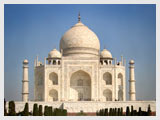
Day 2 - Thursday: Agra
After breakfast on board the train, drive to Agra visiting Fatehpur Sikri enroute.
Fatehpur Sikri - the deserted red sandstone city, built by the Great Mughal Emperor Akbar as his capital and palace in the late 16th century. It was abandoned soon after it was built when the local wells went dry and it remains today in much the same condition that it was over 300 years ago. It is complete with palaces and mosques and used to be a town larger than London when it was originally constructed. Now it is an extraordinary place to wander around with its buildings in near perfect condition.
Agra in terms of ambiance is still associated with its Mughal period. The Mughals besides being great rulers were also great builders and they preserved their best architectural wonders for Agra & its neighborhood.
Later visit Taj Mahal. The Taj Mahal is everything that has been said about it and more. Taking 22 years and 20,000 men to build, the white marble was quarried 200 miles away and was transported to the site by a fleet of 1000 elephants. Built by the Mughal Emperor Shah Jahan as an expression of his love for his wife Mumtaz Mahal, in mid 17th century, the Taj Mahal is truly one of the wonders of the world.
Visit Agra fort. Agra Fort, an outstanding example of Mughal architecture. Agra Fort - the seat and the stronghold of the Mughal Empire under successive generations. This was the seat of Mughal rule and administration and the present structure owes its origins to Akbar who erected the walls and gates and the first buildings on the eastern banks of Yamuna River. Shah Jehan added the impressive quarters and the mosque while Aurangzeb added the outer ramparts. Visit its Hall of Public Audience and its Royal Pavilions.
Lunch, dinner and overnight on board. The train leaves for Jaipur.
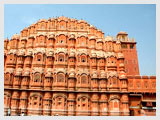
Day 3 - Friday: Jaipur
Jaipur's past is never too far from hand. The city of victory, Jaipur presides over the fascinating desert state and its people: surrounded by rugged hills, each crowned by a formidable fort; and beautiful palaces, mansions and gardens dotted throughout its precincts. The palaces and forts of yesteryear that were witness to royal processions and splendour are now living monuments, accepted quite naturally into the lifestyles of the people of the "pink city". Except for the busy traffic of bicycles, cars and buses, little seems to have changed.
After breakfast on board, you will be driven just outside Jaipur to the ancient capital of Amber to see the fabulous Amber Fort. Maharaja Mansingh, Mughal Emperor Akbar’s most successful General, started the construction of Amber Fort in the 17th century.
Before the City Palace was constructed in Jaipur, Amber was the seat of power. The fort is surrounded by fortified battlements and overlooks the Moat Lake. Ruins and remains are spread over the Aravalli hills and sprawling crenulated walls lattice the surrounding area.
An elephant (alternatively by jeeps) will spare you the trouble of reaching up to the fort. Once on top, stroll through the sprawling complex of courtyards and halls. Many of the rooms have delightful wall paintings, with precious stones and mirrors inlaid in the walls. Most fascinating, perhaps, is the Sheesh Mahal (hall of mirrors) where a single lamplight is reflected in the many mirrors, lighting up the room.
Travelling back to main city, you will stop and see the `Palace of Winds’, otherwise known as Hawa Mahal. It is really an elaborate facade behind which the ladies of the court used to watch the daily goings on in the street below. It is extremely intricate in its pink sandstone carving. The cool wind blows through its facade of windows and latticed screens through which the queens of the court once viewed the streets of the city.
In the afternoon, you will visit the city of Jaipur. Among the highlights to be seen while touring Jaipur include the City Palace, which is an overwhelming complex of exquisite palaces, gardens and courtyards, decorative art and carved doorways. The palace museum houses collections of rare manuscripts, armoury, costumes, carpets and miniature paintings. Walk to the adjacent Jantar Mantar or Astronomical Observatory made by the Maharaja of Jaipur, built in 1726 and is one of the five such astronomical wonders built by Sawai Jai Singh and makes accurate predictions even to this day. You will also have the opportunity to wander about the local markets.
Lunch and Dinner on board train. Train leaves for Sawai Madhopur on overnight journey.

Day 4 - Saturday: Sawai Madhopur
Early morning Jungle Safari at Ranthambhore National Park. Near the township of Sawai Madhopur, in the state of Rajasthan, Ranthambhore National Park is an outstanding example of Project Tiger’s efforts at conservation in the country. The forests around the Ranthambhore Fort were once, the private grounds of the Maharajas of Jaipur. As a result of the stringent efforts in conservation, tigers, the prime assets of the Park, have become more and more active during the day. More than in any other park or sanctuary in India, tigers are easily spotted here in daylight. It is very easy to chance upon a tiger lolling around lazily in the sun, or feverishly hunting down Sambhar around the lakes.
All meals on board the train.
Afternoon Jungle safari. (The jungle safaris will be by canter)
Overnight on board the train which leaves for Udaipur on an overnight journey.
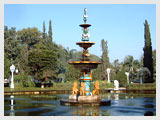
Day 5 - Sunday: Udaipur
Breakfast on board. Later proceed for sight seeing at Udaipur
Set on the shores of Lake Pichola and surrounded by hills, Udaipur grew in complete contrast to the harsh deserts of the rest of Rajasthan. As capital of the old Mewar State it was the only Rajput stronghold to uphold its Hindu allegiance in the face of Muslim invasion. From the late 16th century, peace brought about an era of renaissance in the arts and encouraged the building of beautiful palaces around the lake, culminating in the City Palace, one of the largest palace complexes in the world. The lake itself is a romantic setting surrounding the gleaming white Lake Palace and the Jag Mandir, a refuge of the rebel Mughal prince, Shah Jahan, soon to be the creator of the incomparable Taj Mahal.
Visit the vast and exquisite City Palace, a well-fortified, majestic white monument. The main entrance, a triple-arched gate named the Tripolia, was built in 1725 and is a marvel. The Suraj Gokhada, the Balcony of the Sun, where the Suryavanshi Maharanas of Mewar presented themselves in times of trouble to the people to restore their confidence, is also a fascinating sight. Also visit the Cristal Gallery.
Lunch on board the train.
Drive past Fateh Sagar Lake; visit Sahelion-ki-Bari, the Garden of the Maids-of-Honor, which has numerous fountains in four pools, embellished with delicately chiseled kiosks and elephants. The garden brings to the fore the unique lifestyle of the royal ladies, who once strolled through these gardens. Continue to visit Jagdish Temple, a 16th-century temple dedicated to Lord Vishnu, it is the largest and most splendid temple in Udaipur.
In the evening take a cruise on Lake Pichola to visit Jag Mandir Palace, which covers almost four acres and is noted for its marble pavilion and an imposing dome. You’ll see people doing their laundry on the shores of the lake against the backdrop of the massive City Palace and the old city. (boat ride subject to water levels in the lake)
Special dinner at city hotel. Return to train which leaves for Ahmadabad during the night.
Day 6 - Monday: Aurangabad
Morning at leisure after breakfast on board. Early lunch on board / packed lunch as we drive to Ellora. After sightseeing of Ellora Caves, drive back to Jalgaon in the evening to board the train. Dinner on board 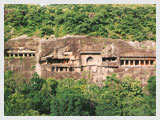
Day 7 - Tuesday: Aurangabad
Early morning arrive in Jalgaon.
Breakfast on board. Then leave by bus to Ajanta (55 kms / 1 ½ hrs). Train will move on without the guests to Daulatabad.
Famous for its caves, Ajanta is one of the few historical and architectural marvels of India. Recognised as the World Heritage site today, it was discovered during the 19th century by a group of British officers who were on a tiger hunt. The Ajanta group of caves, located deep within the Sahyadri hills above the Waghora, depict the story of Buddhism that prevailed here during 200 BC to 650 AD.
Then drive to Aurangabad for lunch at city hotel (100 kms/3 hrs).
Sightseeing of Aurangabad visiting Bibi Ka Maqbara , Panchakki. Bibi Ka Maqbara - Modelled on the Taj Mahal, Aurangabad's Mughal tomb garden was built by Prince Azam Khan in memory of his mother, Begum Rabia Daurani. Panchakki , the word Panchakki literally means water mill. It is another major attraction of Aurangabad. The mill gets its share of water that travels through an underground channel from a source which is 6 km away in the mountains. The water is released on to the wheel creating an enthralling waterfall. The place also has a garden and fountains with fish-filled tanks enhancing the beauty of the entire area.
Transfer to Daulatabad (15 kms/30 mnts). Upon arrival board on train. Dinner on Board.
Later evening departure for Mumbai on an overnight journey.
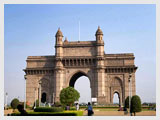
Day 8 - Wednesday: Leave Mumbai
Morning - Arrival at CST - Mumbai. Journey Ends. Enjoy the breakfast on board as the sun rises over the commercial capital of India. Alight at the Chhatrapati Shivaji Terminus in the morning enriched with the rich legacy of this land. The royal journey is over, but the memory of which, will live on forever.
Journey ends
Optional return flight from Mumbai to Delhi is also available.
Tarrif
Note: Currently this train is not in operation and the route (Mumbai - Delhi) of Indian Maharaja Express is being covered by another luxury train Deccan Odyssey.
Schedule
Note: Currently this train is not in operation and the route (Mumbai - Delhi) of Indian Maharaja Express is being covered by another luxury train Deccan Odyssey.
Facilities
Accommodation
The Indian Maharaja offers 21 coaches out of which 11 are passenger cars and each of them having 4 luxurious coupes. There are also two coaches of Presidential suites and each having 2 coupes. These suites include a bedroom, a living room and well-maintained personal wash-rooms.
There is a butler for every coach to look after every guest. Each passenger coach includes 4 compartments that have king-size beds and twin beds. Each compartment also has a mini suite with a wardrobe and safe along with attached restroom and showers. All these coaches were also well maintained with all the modern facilities offering five-star experience. Compartments of this train are equipped with facilities like wall to wall carpeting, MP3 players, channel music, intercom, attached toilets and shower with running hot and cold water.
Restaurants
The luxury train, Indian Maharaja has two restaurant cars managed by the Taj Groups. These restaurants are efficiently handled by well-trained chefs who are experts in cooking a wide variety of Indian, Continental, Goan, Chinese and Maharashtrian cuisines.
Bar
A well stocked bar is there offering you a good variety of Indian as well as international brands of alcohol. The bar also serves its scotch, Indian malt whiskery, wines, liquors, rums and vodkas. A complimentary bottle of wine is also given to the guests in cabins.
Lounge
The lounge is equipped with colour TV, CD & MP3 player so as to entertain the passengers in their leisure. Each cabin includes music channel speakers where one can enjoy the music of one's choice. The lounge offers spectacular views of countryside during the daytime. It is combined with a library with books on diverse subjects, newspapers and magazines.
Rejuvenation
The state-of-the-art gymnasium is also available for travellers who want to refresh themselves. The on-board facilities of Ayurvedic massages along with hot steam bath also rejuvenate passengers and enable them to enjoy the diversity of India with a refreshing mind.
Conference Room
There is a conference car in this royal train, which is equipped with high-end communication facilities and can accommodate 50 guests. The facility of on-board conferencing help passengers to stay in touch with their loved ones and outside world.
Other Facilities
- Group photograph of all guests provided as souvenir of the trip
- Arrival kit containing stationery, brochures and cards
- Beauty parlour and Business center
- On-board mailbox for efficient delivery of mails
- Security and doctor on call for first aid on-board
- Mini-pantry in each coach
- Television on each saloon
- Special smoking areas
- Wide collection of CDs and MP3
- Special assistance for physically challenged persons, crèches, wheel chairs and special attendant
Attractions
The luxury train passes through six different states of India like Delhi, Agra, Jaipur, Udaipur, Sawai Madhopur and Aurangabad. While travelling, the passengers can treat their eyes with the glimpses of the life, culture, tradition, festivals, cuisines and architectures of the place.




